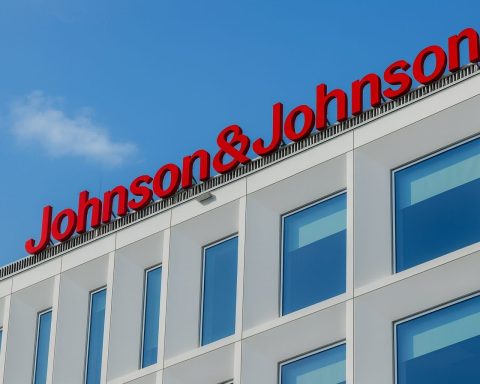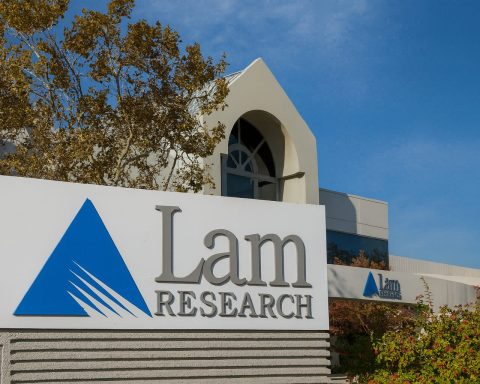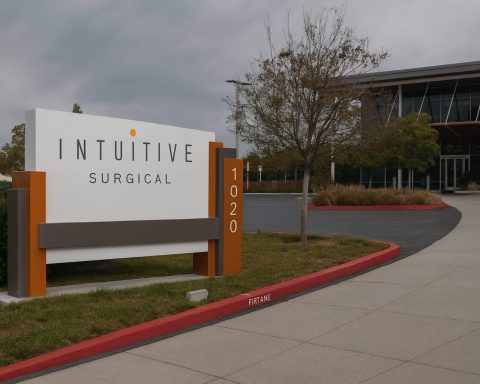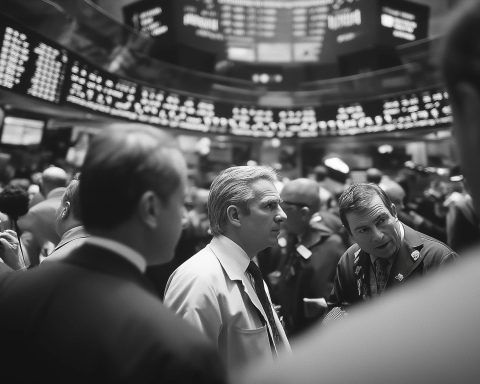- Record Participation: The 8th China International Import Expo (CIIE) opened Nov 5, 2025 in Shanghai. It covers 430,000 m² and drew a record ~4,108 exhibitors from 155+ countries [1] [2]. In the first seven expos (2018–2024) China inked ~$500 billion in trade deals [3].
- Leadership & Messaging: Premier Li Qiang delivered the keynote at the opening. He pledged to “embrace free markets and free trade” and projected China’s GDP will top 170 trillion yuan (~$23.9 trillion) by 2030 [4]. He emphasized China’s vast consumer market is open to global business and urged enterprises “to develop in China with more peace of mind… and more confidence” [5] [6]. Commerce Minister Wang Wentao announced a new “Big Market for All: Export for China” program – a series of 10 trade fairs/year – aiming to make China “the best export destination” and “open up win-win cooperation” [7].
- US–China Context: The expo comes on the heels of a Xi–Trump summit that extended a tariff truce. Wall Street’s tariff war fears have eased slightly, and Chinese officials actively courted American business. Li visited US pavilions to signal China is still an “investment magnet” despite the de-escalation [8] [9]. Over a dozen US farm producers are at the show, and many multinationals (some back after years away) have booths [10]. Industry insiders expect US exhibitors to secure new orders by capitalizing on the “renewed rapport” between the world’s two largest economies [11].
- Major Deals: China’s biggest state firms unveiled huge contracts. Sinopec (HK:0386), the oil & chemicals giant, signed $40.9 billion in procurement deals on Nov 4 for crude, chemicals, equipment and goods [12]. Note: Sinopec’s shares (HK) traded around HK$4.20 on Nov 5 [13]. (Since 2018, Sinopec says it has booked ~$325 billion in orders across all CIIE rounds [14].) In total, last year’s expo yielded ~$80 billion in deals [15]. Chinese authorities hope the 2025 expo will boost imports and curb the nation’s ballooning trade surplus (expected >$1 trillion in 2025 [16] [17]).
- Health & Innovation Showcase: Leading pharma and tech firms touted new products. AstraZeneca (LSE:AZN) is expanding its Qingdao production base with a $136 million investment, and unveiled two new cancer drugs recently approved in China [18]. Gilead (Nasdaq:GILD) showcased two Asian-first drugs (long-acting HIV prevention and a rare-disease therapy) and debuted 13 approved medicines in China [19]. Merck (NYSE:MRK) presented ~30 approved drugs and stressed joint R&D with Chinese partners [20] [21]. Eli Lilly (NYSE:LLY) highlighted obesity and Alzheimer’s treatments and created immersive “awareness” exhibits on aging-related diseases [22] [23]. Novo Nordisk (NYSE:NVO) featured its GLP-1 “semaglutide family” obesity/diabetes products in an experiential “Lightness Hut” [24] [25]. Executives from these firms pledged deeper investment in China’s market and innovation ecosystem [26] [27]. (Analysts note AZN’s stock is ~12,538 pence (£125.38) [28] with strong buy ratings, GILD ~$123 [29], MRK ~$83.86 [30], LLY ~$906.86 [31], NVO ~$48.25 [32]. AstraZeneca and Merck have ~17–21% upside to targets [33] [34].)
Expo Highlights & Speeches
The CIIE is China’s flagship trade fair to demonstrate “free trade credentials” and attract imports [35] [36]. Premier Li stressed high-level opening-up, promising to keep China’s economy “fairer and more transparent” [37]. Reuters notes Li said rising tariffs “are seriously undermining international economic and trade rules” [38]. He repeated China’s commitment to increase imports of “high quality products” and let global companies expand with confidence [39]. This year’s expo will coincide with dozens of Hongqiao Economic Forum conferences on global economic governance. Shanghai’s Liu Liang (social sciences researcher) calls the expo a chance to see “innovative technologies” that will “boost the new productive forces” in Shanghai [40]. (In past years, the fair has also debuted hundreds of Chinese tech products; 2025 will introduce ~460 new domestic innovations, from robotics to biotech [41].)
US Companies & Xi–Trump Impact
With Sino–US tensions easing, American businesses have been encouraged back. The South China Morning Post reports “more than a dozen agricultural producers from US breadbasket regions” and several US multinationals set up booths [42]. State delegations and trade officials are attending. Participants told SCMP they expect a bidding war of orders, leveraging the “renewed rapport” after the Xi–Trump meeting [43]. Li’s visible interest in US exhibits – he visited American company pavilions – is meant to “send a clear signal to US and global businesses that China’s vast consumer market remains an investment magnet” [44]. In sum, observers say the expo will be an early test of the leaders’ truce: if deals flow, it could cement one year of tariff stability; if not, it may expose “fragile truce” risks [45] [46].
Major Deals and Investments
Besides Sinopec’s huge order book [47], other major announcements included: Bank of China’s new overseas credit lines, technology joint-ventures (e.g. 5G, AI), and large import contracts for consumer goods and commodities. City News Service notes past expos (2018–2024) secured ~$500 billion in contracts [48]. This year, China’s Commerce Ministry (CIIE Bureau) reports 4,108 exhibitors and over 4,100 overseas companies – once again making the US the single largest exhibitor country [49]. Of note, Sinopec’s vice-chair Zhao Dong said the group will focus on “green, low-carbon cooperation” and AI-driven efficiency in its industry [50] [51]. Analysts say such tie-ups should support Chinese industrial upgrading as well as provide lucrative opportunities for foreign partners.
Health & Tech on Display
Global healthcare giants used the expo as a marketing and policy platform. AstraZeneca announced a CNY 1 billion (~$136 m) expansion of its Qingdao drug plant, plus the opening of a new Beijing R&D center [52] [53]. AZ exec Iskra Reic emphasized confidence in China’s “innovative ecosystem” and building China into a healthcare hub [54]. Gilead highlighted Lenacapavir – an FDA‑approved, twice-yearly HIV prevention drug – marking its first use in China’s medical tourism zones [55] [56]. Gilead’s CCO Johanna Mercier praised CIIE’s “siphon and spillover effect” in bringing new drugs to market [57]. Eli Lilly staged interactive “health awareness zones” (e.g. Alzheimer’s “Memory Café”) to educate the public alongside promotions of its obesity and diabetes drugs [58] [59]. Novo Nordisk showcased its semaglutide family for diabetes/weight-loss and ran an immersive “Lightness Hut” experience on obesity management [60] [61]. Across these exhibits, company leaders reiterated plans to deepen local partnerships and R&D [62] [63].
Market Impact and Analyst Views
Financial markets have responded moderately to the positive signals. As of Nov 5, share prices were roughly: Sinopec (HK:0386) HK$4.20 [64], AstraZeneca ~12,538 pence (£125.38) [65], Gilead $123 [66], Merck $83.86 [67], Eli Lilly $906.86 [68], Novo Nordisk $48.25 [69]. Brokers note that analysts are broadly bullish on these names: AstraZeneca has a “strong buy” consensus and ~£146 (∼17% upside) 12-month target [70]; Merck’s target is ~$101 (∼21% upside) [71]; Lilly and Novo also trade near multi-year highs. However, some experts remain cautious. The China Chamber of Commerce and European business groups have in past years criticized the expo as more show than substance, given China’s ever‑growing trade surplus [72] [73]. Even Premier Li acknowledged that while exports have surged, imports lag (“imports barely growing” [74]), fueling foreign trade tensions.
Economic Outlook and Forecasts
The expo occurs amid mixed signals for China’s economy. IMF and international analysts see near‑term stability: the IMF kept its 2025 growth forecast at ~4.8% [75] (up from 4.0% in 2024) and 4.2% in 2026, reflecting resilient exports and stimulus. China itself projects about 4–4.2% GDP growth per year through 2030 [76] [77]. Premier Li’s target (170T yuan by 2030) aligns with ~4% CAGR [78]. But risks loom: analysts warn property and debt issues could drag on domestic demand [79], and any slip-up in the US‑China truce (e.g. Trump’s recent threats of 100% tariffs) could knock global growth. The IMF recently raised its global 2025 growth forecast to ~3.2% thanks to front-loaded trade and China stimulus [80], but warned a renewed tariff war would be a “very significant risk” to recovery [81].
Outlook: Industry experts say the CIIE will test whether China’s talk on imports translates to real deals. “The expo is more than a showcase,” notes Liu Liang; he and others expect it to accelerate foreign-tech adoption and supply‑chain links in China [82]. If order books and investments at CIIE 2025 are hefty, it could cement confidence in the new trade détente. But many analysts will be watching whether China truly delivers on import growth or if its trade surpluses continue to soar despite the rhetoric. The intersection of politics and business at this year’s expo suggests China is keen to highlight openness – yet global investors remain wary of unresolved frictions.
Sources: Official reports and statements from China’s Commerce Ministry/CIIE Bureau [83] [84]; Reuters and Bloomberg coverage of Premier Li’s speech [85] [86]; South China Morning Post reporting on US exhibitor surge and expo stats [87] [88]; industry press on expo deals (Sinopec, pharma firms) [89] [90]; financial data from Investing.com [91] [92]; IMF/Reuters/SCMP economic forecasts [93] [94]. All figures and quotes as cited.
References
1. www.scmp.com, 2. www.reuters.com, 3. www.citynewsservice.cn, 4. www.bloomberg.com, 5. www.reuters.com, 6. www.reuters.com, 7. www.reuters.com, 8. www.scmp.com, 9. economictimes.indiatimes.com, 10. www.scmp.com, 11. www.scmp.com, 12. www.bastillepost.com, 13. www.investing.com, 14. www.bastillepost.com, 15. www.scmp.com, 16. www.reuters.com, 17. www.reuters.com, 18. news.futunn.com, 19. news.futunn.com, 20. news.futunn.com, 21. news.futunn.com, 22. news.futunn.com, 23. news.futunn.com, 24. news.futunn.com, 25. news.futunn.com, 26. news.futunn.com, 27. news.futunn.com, 28. www.investing.com, 29. www.investing.com, 30. www.investing.com, 31. www.investing.com, 32. www.investing.com, 33. www.investing.com, 34. www.investing.com, 35. www.reuters.com, 36. www.scmp.com, 37. www.reuters.com, 38. www.reuters.com, 39. www.reuters.com, 40. www.scmp.com, 41. www.citynewsservice.cn, 42. www.scmp.com, 43. www.scmp.com, 44. www.scmp.com, 45. www.reuters.com, 46. www.scmp.com, 47. www.bastillepost.com, 48. www.citynewsservice.cn, 49. www.reuters.com, 50. www.bastillepost.com, 51. www.bastillepost.com, 52. news.futunn.com, 53. news.futunn.com, 54. news.futunn.com, 55. news.futunn.com, 56. news.futunn.com, 57. news.futunn.com, 58. news.futunn.com, 59. news.futunn.com, 60. news.futunn.com, 61. news.futunn.com, 62. news.futunn.com, 63. news.futunn.com, 64. www.investing.com, 65. www.investing.com, 66. www.investing.com, 67. www.investing.com, 68. www.investing.com, 69. www.investing.com, 70. www.investing.com, 71. www.investing.com, 72. www.reuters.com, 73. www.reuters.com, 74. www.reuters.com, 75. www.scmp.com, 76. www.bloomberg.com, 77. www.scmp.com, 78. www.bloomberg.com, 79. www.scmp.com, 80. www.reuters.com, 81. www.reuters.com, 82. www.scmp.com, 83. www.reuters.com, 84. www.scmp.com, 85. www.reuters.com, 86. www.bloomberg.com, 87. www.scmp.com, 88. www.scmp.com, 89. www.bastillepost.com, 90. news.futunn.com, 91. www.investing.com, 92. www.investing.com, 93. www.reuters.com, 94. www.scmp.com








